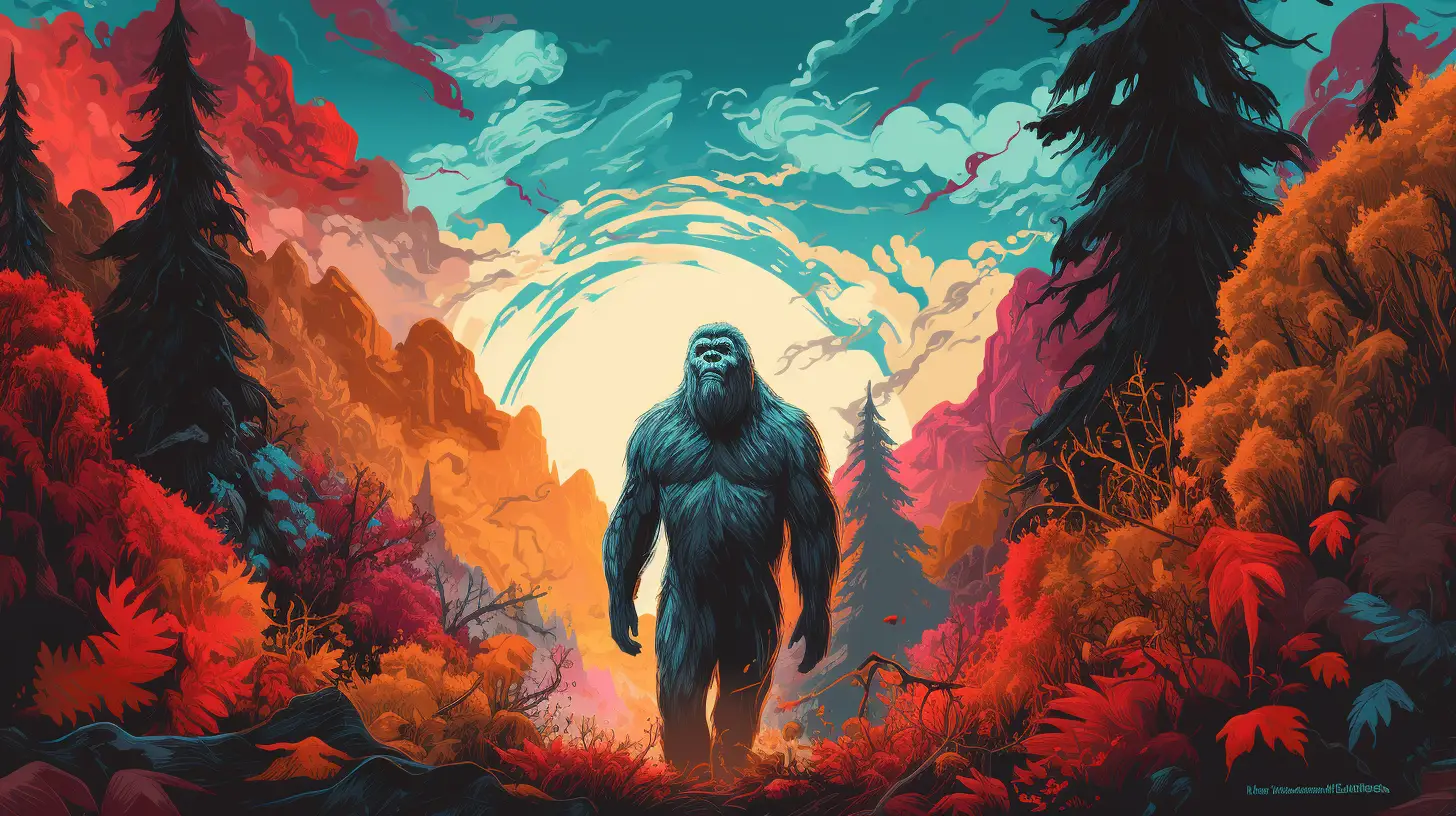The enigma of Bigfoot, enveloped in a rich tapestry of folklore, alleged sightings, and cultural representations, treads through the verdant forests of North America, etching a notable figure of mystery and contemplation in the societal mind. In various forms, legends of giant, hairy, bipedal humanoids pervade a number of continents, taking on names such as the Yowie, Yeti, and Abominable Snowman, but here we’re focusing on the North American version, often referred to as the Sasquatch.
Historical and Cultural Foundations
Preceding modern reports, native tribes, each with unique tales of bipedal, ape-like entities, sprinkled seeds for the Bigfoot legend. Figures like the Wood Booger and Windigo share attributes with Bigfoot, emphasizing stealth and supernatural elements, often acting as moral tales or warnings. The presence of these earlier depictions – recorded through both oral storytelling traditions and contemporaneous artwork, provides increased credibility to the tales that would follow.
More recently, accounts from settlers and explorers, such as Theodore Roosevelt’s story in “The Wilderness Hunter” (1892), detailed unnerving encounters with unexplained beings, propelling the Bigfoot narrative into wider consciousness.
Physical Characteristics and Documented Habits
Physiological Attributes: Witnesses have consistently described Bigfoot with specific physical characteristics, emphasizing its intimidating stature, ostensible primate features, and an overpowering odor often compared to that of decaying matter or skunk.
Behavioral Traits: While primarily solitary and reclusive, reports have also depicted Bigfoot exhibiting curiosity towards human activities, often observing from a distance and using tools, such as throwing stones or hitting trees with sticks, as a possible form of communication. These accounts generate an eerie wilderness experience for observers.
Zoological Scrutiny, Sightings and Pursuits
The Patterson-Gimlin Film: As one of the most dissected pieces of potential evidence, the film’s legitimacy has been fervently debated within scientific, cryptozoological, and skeptic communities, rendering it a polarizing artifact.
Colorado Bigfoot: Very recently, in 2023 in fact, new footage has emerged that provides a relatively clear view of a creature resembling Bigfoot, walking and then squatting in a mountainous grassland in Colorado. When seated, the creature blends into its surroundings beautifully; in a coat that provides sufficient camouflage as to make it difficult to see while stationary. Doubters claim that this figure could be a human hunter wearing a ghillie suit, but this tantalizing footage continues to raise questions.
DNA Examinations: Despite numerous DNA samples submitted for testing, none have definitively proven Bigfoot’s existence. Many samples were identified as originating from common animals like bears or humans, while others, like Dr. Ketchum’s findings, faced criticism for lack of peer review and methodological flaws.
Real Creatures Potentially Misconstrued as Bigfoot
While sightings have been frequent, it’s possible that people are mistaking fleeting glances of known animals for the elusive sasquatch. Many of the areas where bigfoot sightings are most common, for example, are frequented by other large animals, such as bears or wolves, or even human hunters wearing camouflage. Following are a few possible candidates for recent alleged bigfoot sightings:
Bears: With their substantial size and ability to stand bipedally, bears are often considered potential culprits for Bigfoot sightings. Misidentifications may arise, especially in suboptimal sighting conditions, such as nocturnal encounters, or from witnesses unfamiliar with bear behavior. Brown and black bears can both appear tall, muscular and somewhat humanoid when on their hind legs.
Humans: While our feet aren’t quite as characteristically large, humans adorned in animal hides, ghillie suits, hunting camouflage or costumes could also be misinterpreted as Bigfoot, especially considering the numerous hoaxes that have permeated the Bigfoot hunting community.
Gigantopithecus: This large primate, presumed to be extinct, lived in Asia several hundred thousand years ago. Given that it existed alongside early humans, this creature has been speculated as a possible origin or relative of Bigfoot due to its massive size and bipedal potential, though no evidence supports its migration to North America. If small populations of Gigantopithecus survived into more recent human history, encounters with these imposing, human-like creatures would have readily become the subject of stories and legends.
Pop Culture and Bigfoot
- Film and TV: From the whimsical presentation in “Harry and the Hendersons” to the more ominous depiction in “Willow Creek,” Bigfoot oscillates between a friendly giant and a dark, forest-dwelling entity, exploring a spectrum of human interactions with the unknown.
- Literature: The exploration in books like “Wild Thing” by Josh Bazell and “The Bigfoot Files” by Lindsay Eagar shows the narrative flexibility of Bigfoot, capable of being adapted into various genres and thematic explorations.
- Advertising: Bigfoot has also stomped into the marketing world, featured in advertisements for products like Jack Link’s Beef Jerky, showcasing a humorous and lighter perspective.
Symbolism and Philosophical Considerations
The endurance of the Bigfoot legend, and people’s frequent insistence that the creature truly exists, says much about our desire to locate creatures that are closely related to humans, in order to learn more about our history and experience as a species. While the fossil evidence reveals much about the gradual development and evolution of our species from earlier forms, many people remain fascinated by the concept of a “missing link” that could connect modern humans back to other primate forms, or to nature more broadly. Bigfoot symbolizes the untamed wilderness, representing a link to an ancient world unscathed by industrialization, eliciting contemplation regarding humanity’s relationship with nature. The pursuit of Bigfoot extends beyond mere curiosity, reflecting our intrinsic need to explore, understand, and categorize our world, embodying the undying spirit of human exploration and the innate allure of mystery.
Where Does This Leave Us?
Bigfoot, encompassing multifaceted dimensions from tangible, ecological wonderings to psychological and cultural imprints, enthralls society with a blend of fear, awe, and curiosity. Whether regarded as an undiscovered species, a figment of collective imagination, or a symbol of unspoiled wilderness, Bigfoot stands tall in human consciousness, navigating through the forests of reality and myth, compelling us to ponder our place amidst nature’s boundless enigma.
At Ancient Theory we only use trusted sources to document our articles. Such relevant sources include authentic documents, newspaper and magazine articles, established authors, or reputable websites.
- On Bigfoot’s trail in remote northern California (BBC) [Source]
- Teddy Roosevelt's retelling of an old trapper's encounter in the Bitteroot Mountains [Source]
- Film Introducing Bigfoot To World Still Mysterious 50 Years Later [Source]
- Genetic analysis of hair samples attributed to yeti, bigfoot and other anomalous primates [Source]






